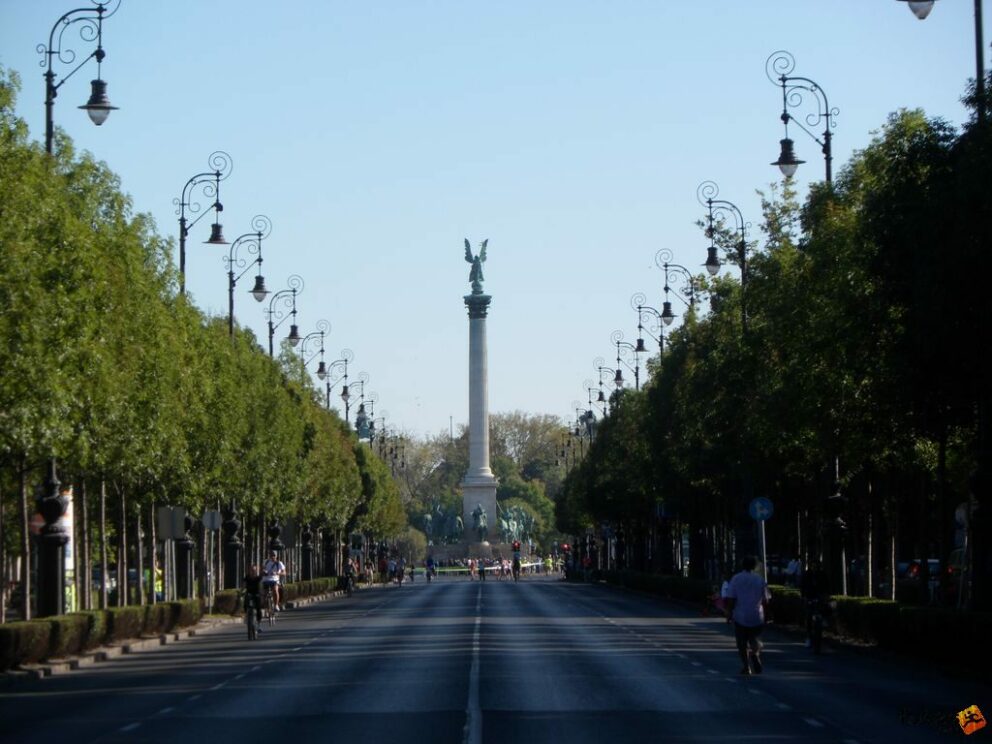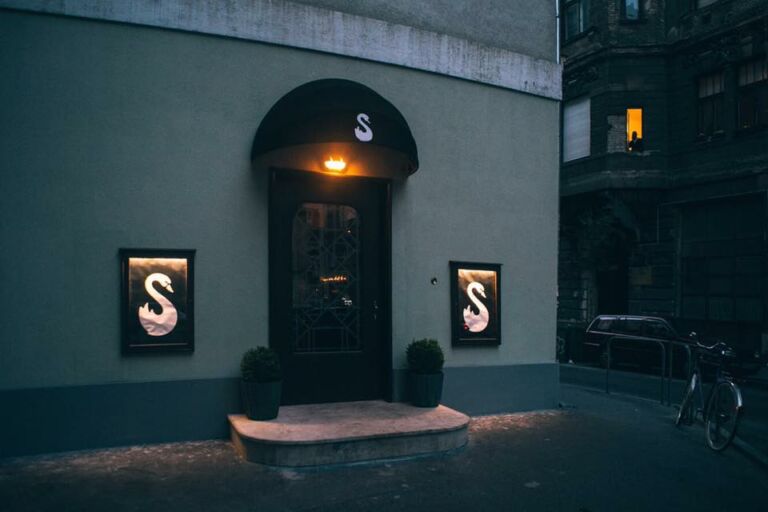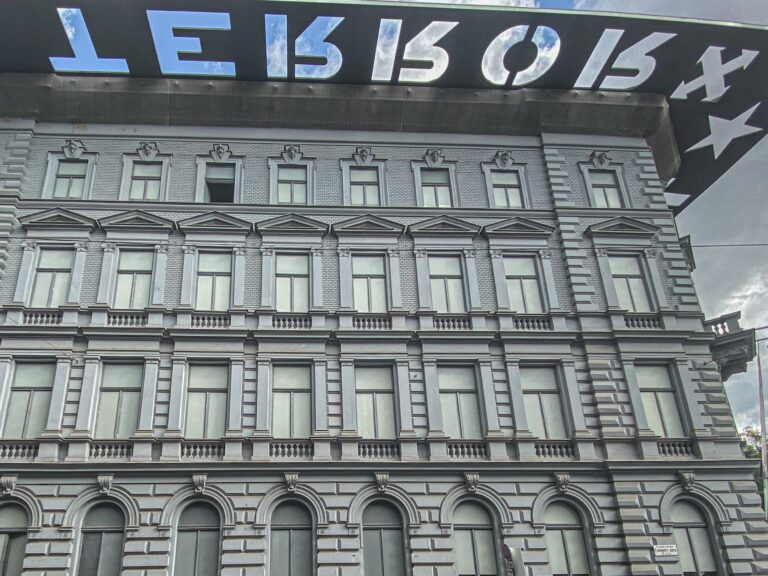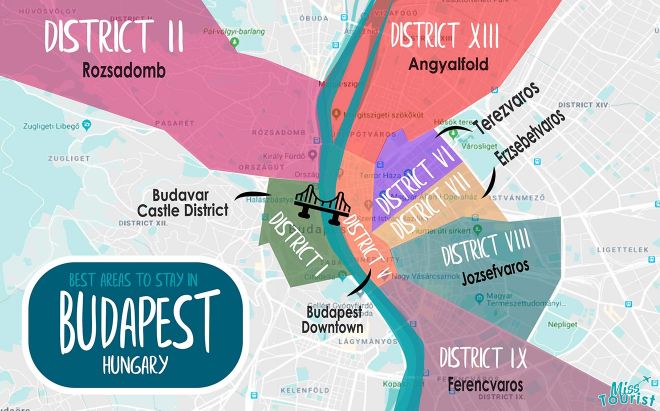Andrássy Avenue: A timeless and elegant UNESCO-listed jewel in Budapest

Andrássy Avenue: A timeless and elegant UNESCO-listed jewel in Budapest
Ah, Andrassy Avenue (Andrássy út) —the very heart of Budapest’s grandeur and charm! This boulevard is the perfect mix of sophistication, culture, and vibrant city life, and every time I walk along its wide, tree-lined streets, I can’t help but feel like I’m stepping into a world of timeless elegance. It is in the very heart of Budapest.
Whether you’re visiting for the first time or strolling its paths again, it’s impossible not to be swept away by the beauty of Andrássy Avenue in Budapest, Hungary.
A brief history of Andrássy Avenue: Budapest’s Champs-Élysées
Andrássy Avenue is more than just a street—it’s a statement. It was laid out in 1872 and officially inaugurated in 1896 for the Millennium Celebration of Hungary’s thousand-year-old history. Its wide, luxurious design was inspired by grand boulevards like the Champs-Élysées in Paris, meant to symbolize Budapest’s aspirations to be a European capital of art, culture, and style. Count Gyula Andrássy, Hungary’s first prime minister, lent his name to this boulevard, which quickly became the city’s most desirable address.
But don’t be fooled by the 19th-century elegance—Andrássy is far from stuck in the past. Today, it is a UNESCO World Heritage site, a place where you can find the beating heart of Budapest’s culture, fashion, and lifestyle.

The art of shopping on Andrássy Avenue
If you’ve got a love for high fashion, Andrássy Avenue is the place to be. Think of it as Budapest’s Rodeo Drive, where international luxury brands meet Hungarian elegance. As you wander, you’ll encounter top-tier names like Gucci, Louis Vuitton, Moncler and Rolex — their shop windows glittering with opulent designs that almost beg you to step inside (or at least dream a little as you pass by). But it’s not just the global giants; there are also local boutiques worth checking out, showcasing Hungarian designers who blend traditional craftsmanship with contemporary flair.
If you’re looking for a souvenir that speaks of true Hungarian artistry, Herend Porcelain offers delicate, handcrafted pieces that have been a Hungarian icon since the 19th century. For a touch of Hungarian heritage, stop by the Zsolnay Porcelain Gallery, where you’ll find exquisite hand-painted ceramics that blend tradition with timeless elegance.

Culture along the way: from opera to art
Shopping may be tempting, but Andrássy Avenue is just as much about soaking in the city’s rich culture. As you walk, make sure to slow down and take in the architectural beauty around you—think stately neo-Renaissance buildings, ornate facades, and elegant balconies. And then, of course, there are the landmarks!
One of the most iconic is the Hungarian State Opera House, located just a few blocks from the start of Andrássy. Built in 1884 and designed by Miklós Ybl, the Opera House is a jaw-dropping marvel of neo-Renaissance architecture. Its interiors are just as spectacular, dripping with gold, marble, and frescoes that practically transport you back to the 19th century. The building underwent a full renovation between 2017 and 2022, restoring its original splendor while updating its acoustics and facilities to 21st-century standards. Even if you’re not an opera fan, taking a tour or attending a performance here is an absolute must.

Further down the avenue, you’ll find the House of Terror Museum. This isn’t your usual museum—it’s an emotional, powerful journey through Hungary’s difficult 20th-century history, including the dark days of Nazi and Soviet occupation. The museum is housed in a building once used by the secret police, and its exhibitions offer a chilling insight into the oppression that haunted Budapest during those eras. It’s not an easy visit, but it’s incredibly impactful.
Just a bit farther along, Andrássy opens up into Heroes’ Square, a grand, open plaza flanked by the Museum of Fine Arts and the Hall of Art. The square itself is a striking tribute to Hungary’s most significant leaders and warriors, and the museums house some of the city’s finest art collections. This entire area is perfect for a leisurely afternoon of museum-hopping or just relaxing by the nearby Városliget (City Park).
Satisfy your taste buds
After all that exploring, you’ll likely need to refuel, and luckily, Andrássy Avenue is dotted with some incredible dining options. For a refined yet relaxed dining experience right on Andrássy Avenue, Bistro Fine offers a modern take on Hungarian cuisine with a carefully curated wine list, just steps away from the Opera House.
Just a short stroll from Andrássy Avenue, Liszt Ferenc Square (Liszt Ferenc tér) is a lively hub lined with cafes and restaurants, perfect for people-watching and soaking up the local vibe. One of the most popular spots here is Menza, a retro-chic bistro serving classic Hungarian dishes with a modern twist in a vibrant setting.
And for dessert? Don’t miss Gerbeaud Café, just a short walk from the avenue, where you can indulge in one of Budapest’s most iconic dobos torta or a slice of creamy, rich Esterházy torte. Right across from the Opera House, Művész Café invites you to step back in time with its elegant interiors and traditional Hungarian cakes—perfect for a pre-show coffee or a leisurely afternoon pause.

Transport and practical info
Getting to Andrássy Avenue is incredibly easy, thanks to Budapest’s reliable public transport system. In fact, you’ll be walking right above one of Europe’s oldest subway lines, the metro line M1 or Millennium Underground. The yellow line runs directly beneath Andrássy, with stops at key points like Opera, Oktogon, and Heroes’ Square (Hősök tere).
I recommend starting your walk from Deák Ferenc tér—the central hub where many of Budapest’s public transport lines meet—and strolling all the way to Heroes’ Square. It’s about a 2.5 km walk, so wear comfortable shoes, but the journey is peppered with fascinating sights, tempting shops, and Instagram-worthy moments. If you’re pressed for time, hop on the M1 to cover more ground quickly.
Best time to visit
Andrássy Avenue is enchanting any time of year, but my personal favorite is during the spring or early fall. In spring, the trees along the boulevard burst into bloom, and there’s a lovely energy in the air as people enjoy the milder weather. Fall, on the other hand, turns the avenue into a picturesque palette of golds and reds—perfect for a romantic stroll. Winter, too, has its charm, especially when the street is decorated with twinkling lights and festive decorations for the holiday season.

Final thoughts
Andrássy Avenue is the embodiment of Budapest’s old-world elegance, yet it’s constantly evolving with the modern flair of luxury shops, fine dining, and high culture. Whether you’re a lover of history, a culture enthusiast, or a fashion devotee, this iconic boulevard offers something for everyone. It’s more than just a street—it’s an experience.
So, when you’re in Budapest, be sure to take your time wandering along Andrássy Avenue. Look up at the stunning architecture, stop into a shop or café, and let the grandeur of the city sweep you off your feet. Trust me—this boulevard is unmissable!
Pro tip: Besides Andrássy Street, Váci Street is also a famous shopping street in Budapest.
FAQ
What is Andrássy Avenue and why is it significant?
Andrássy Avenue, known as Andrássy út in Hungarian, is a historic boulevard in Budapest, Hungary. It stretches from the City Park (Városliget) to Heroes’ Square (Hősök tere) and is recognized as a UNESCO World Heritage Site. This grand avenue is significant for its stunning neo-renaissance architecture and cultural landmarks, including the Hungarian State Opera and the House of Terror. It represents the rich history of Budapest and is often considered one of the most beautiful boulevards in the world.
What are the main attractions along Andrássy Avenue?
Along Andrássy Avenue, visitors can explore numerous attractions, including the Hungarian State Opera House, which is renowned for its architectural beauty and performances. The House of Terror, a museum dedicated to the victims of the fascist and communist regimes, offers a poignant look into Hungarian history. Additionally, the Museum of Fine Arts and the University of Fine Arts are located nearby, enriching the cultural landscape of this iconic avenue.
How can I reach Andrássy Avenue using public transport?
Andrássy Avenue is conveniently accessible via the metro system in Budapest. The M1 metro line, also known as the Millennium Underground, runs directly along the avenue. Visitors can get off at the Oktogon or Kodály Körönd stations to explore the area. The metro provides a quick and efficient way to reach this central location.
What historical events are associated with Andrássy Avenue?
The history of Andrássy Avenue dates back to its creation in 1872, as a connection between the city center and the City Park. It was named after Prime Minister Gyula Andrássy, who played a crucial role in the modernization of Budapest. The avenue has witnessed significant historical events, including celebrations and demonstrations, reflecting the political and social changes in Hungary.
Which architectural styles are represented along Andrássy Avenue?
Andrássy Avenue showcases a rich blend of architectural styles, most notably Neo-Renaissance, which defines many of its grand 19th-century palaces and townhouses. You’ll also find examples of Eclecticism and Art Nouveau, especially in the side streets and upper sections of the avenue. This stylistic diversity reflects Budapest’s turn-of-the-century ambition to become a modern European capital while honoring classical elegance.





